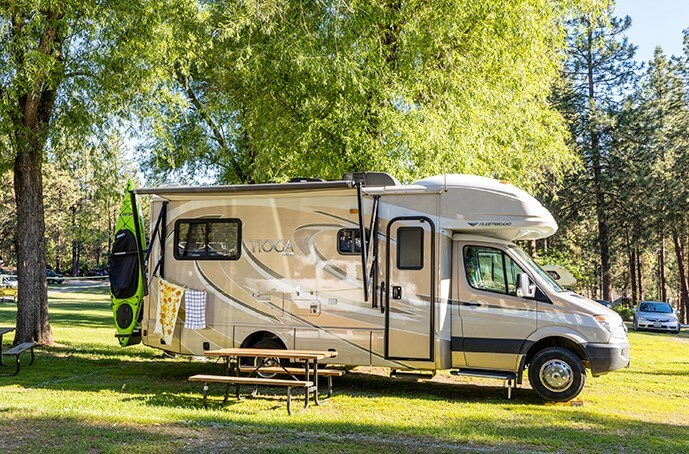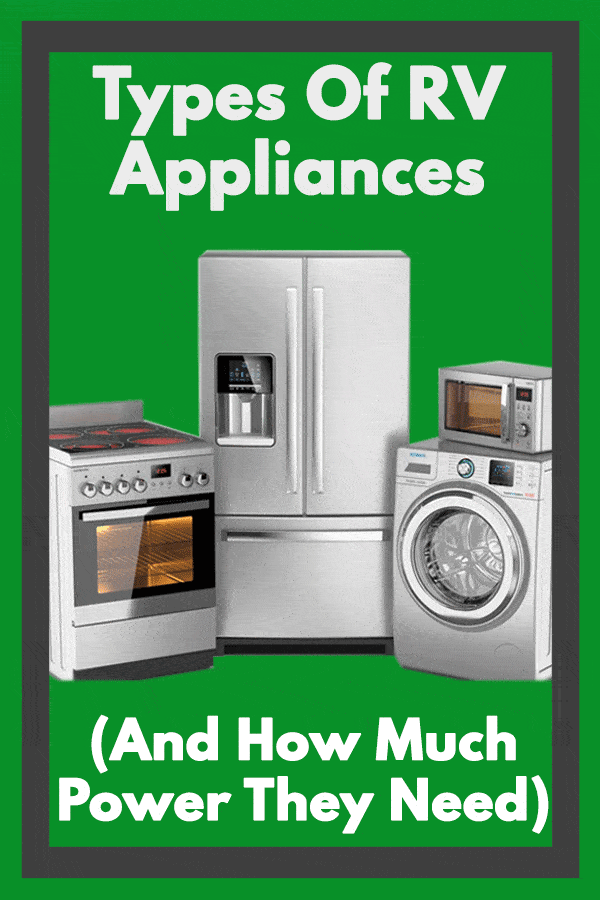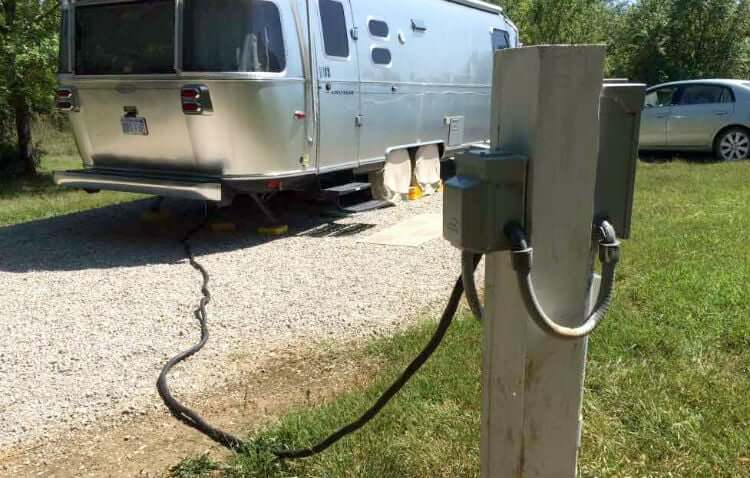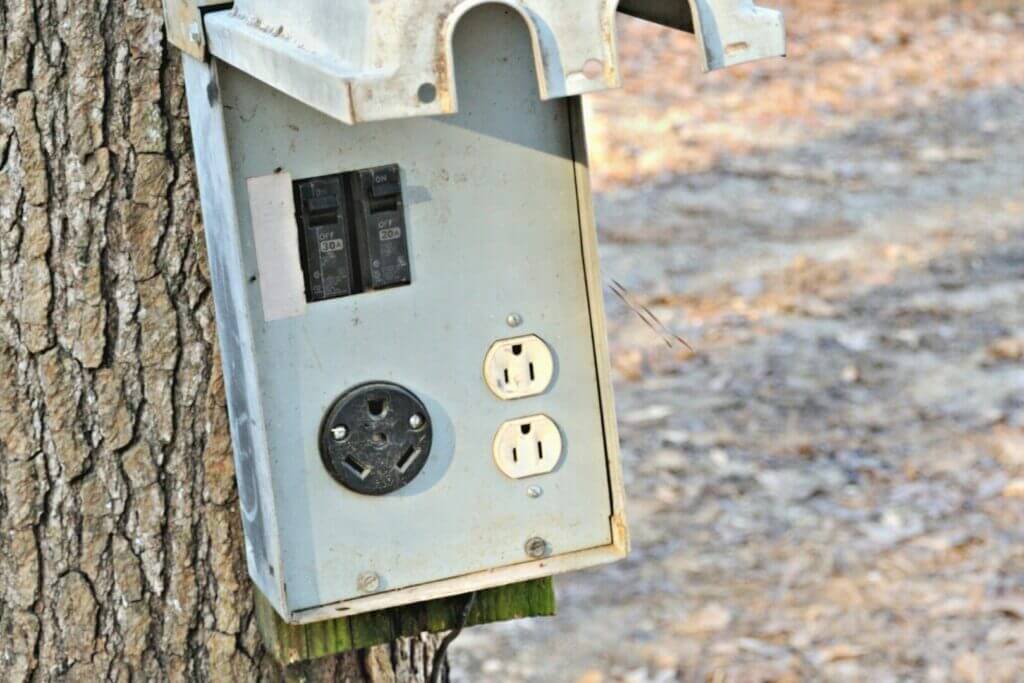Do you own a 30 Amps RV and constantly have problems with the electrical system?
Running too much equipment at once can cause the fuse to trip. The critical thing to understand here is that when we attempt to use too many power-hungry appliances simultaneously, the probability of getting the electrical appliances damaged increases. Also, specific campgrounds do not offer a sufficient amount of electricity to keep RV appliances working. And the irregular power supply can hinder appliances’ working inside RVs. So, it is necessary to find alternatives to avoid any breakout or fuse in your RV’s electrical system.

Before going into the deep detail of the RV electrical system, let’s first understand a few scientific terms related to it that can help us better understand the whole working of the RV electrical system.
What Is Voltage?
Before diving into details and alternatives, let’s first understand the concept of ‘voltage’ and how it can contribute to the working of appliances. Voltage is measured in watts, deciding the required value on which equipment works. It is of two types: starting voltage and running voltage. Too much physics, I agree, but it is needed for a smooth working system.
Relation Between Amperes and Voltage
Before choosing the appliances for your camper van, it is first suggested to look at some conversions such as 30-amps electrical power will deliver 3600 watts of power, whereas 50-amps may provide 12000 watts. In addition, more than two air conditioners in an RV may increase the voltage requirement to 50-amps. And to avoid blowing breakers, it is suggested to maintain a voltage under 3600 watts inside your RV.

How Much Power Does The RV Appliances Draw?
If you wish to run your RV on 30-amps, then it is suggested to get informed about the power drawn by each appliance or electrical equipment inside your RV. First, prepare a list of all the electrical appliances you plan to install inside your RV. This list will help you to compare the power requirement of each appliance. Also, it will allow you to keep an eye on the appliances that draw power within the parameters of 30-amps or align with the campgrounds’ power supply.

Starting Vs. Running Voltage List
As mentioned above, if you are making a list of the appliances inside your RV, do not forget to prepare a list concerning the starting and running voltage.
| Appliance | Starting Voltage | Running Voltage |
| 1. Air conditioner (per unit) | 2000 Watts | 700 Watts |
| 2. RV Refrigerator | 600 Watts | 180 Watts |
| 3. RV Microwave | 2000 Watts | 1500 Watts |
| 4. RV Television | 500 Watts | 190 Watts |
| 5. Satellite Reviewer | 200 Watts | 20 Watts |
| 6. Coffee Maker | 1500 Watts | 750 Watts |
| 7. Hair Dryer | 1900 Watts | 1800 Watts |
| 8. Cell Phone Charger | 300 Watts | 25 Watts |
| 9. Blender | 800 Watts | 300 Watts |
| 10. Vacuum | 600 Watts | 300 Watts |
As we know, 30-Amps is approximately 3,600 watts, sufficient to run one air conditioner, refrigerator, and electric water heater.
You may wonder how we can cook, entertain and clean but remain cool at 30-amps. So, the trick is switching the devices, prioritizing the needed appliances, and using them one at a time. For example, if you have a refrigerator in your RV which works on propane or electricity. If you also wish to use a hair dryer that requires 1800 watts of electricity, you can switch the refrigerator on propane to cut down the voltage. So, it is a good idea to write down and note all the electrical appliances of your RV without forgetting the A/C and perhaps any electrical heating equipment, as sometimes these minuscule items are often left unconsidered.
But what do we mean by starting and running voltage?
To answer this, let’s consider an example of a regular refrigerator with a compressor found in our homes. The starting voltage of the fridge to kick start is 2200 watts, but after a while, it drops down to merely 700 watts and runs on it effectively. This distinction is even more significant in bigger appliances such as air conditioners, generators, etc.
Fortunately, most of the appliances inside the RV do not require high voltage to kick-start them. Hence, it will be easy to bring the appliances of the RV in alignment with 30-amps. Also, the voltage labeled on the electrical equipment is the running voltage, not the starting voltage.
How to Run RV on 30-amps
Now that we have successfully understood the appliances and their required voltage inside the RV. We can talk about the ways to make it run on 30amps. But, first, we need to invest in an adapter, often identified as dog-bones due to the round shape plug on either cord, which is quite similar to the bone one gives to a dog.
Tips To Run RV Appliances On 30-Amps
If you want your RV appliances to work on 30-amps without interruption, you can ration the power so that it wouldn’t become a hurdle in your camping.
What Draws The Power Of Your RV?
Figure out the power requirements of different appliances, then use the equipment accordingly. For example, suppose you want to run an air conditioner on 30-amps inside your camper van; then you will have to turn off other devices, such as an oven or perhaps a hair dryer, that may be consuming high voltage.
Testing Out The Circuits
To find out the net voltage drawn by each appliance, get a small testing device or an outlet tester to help you identify the voltage. It will warn you if any chance of breaking blowout may develop. After all the efforts, if you still face overloading your 30-amp electrical system, you must call an expert as he may help you better rather than any temporary solution. You can learn more about the devices in RV that run on 30-amp by taking reference from the videos that are visibly available all over the internet.
Conclusion
To have a seamless RVing experience, it’s preferred to know the voltage of each electrical appliance present in your RV so that you can run your RV on 30-amps effortlessly without any fear of overloading or breaking blowout. It is rightly said, “Precaution Is Better Than Cure.”

